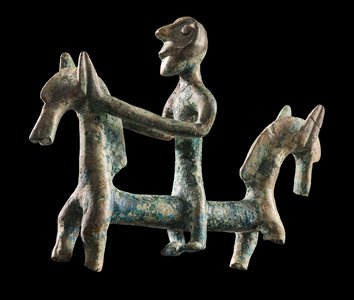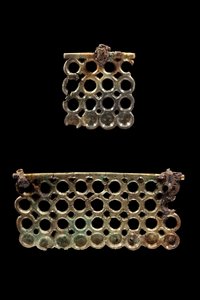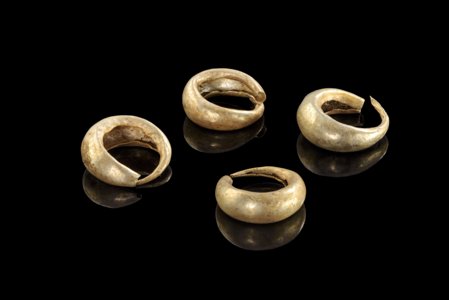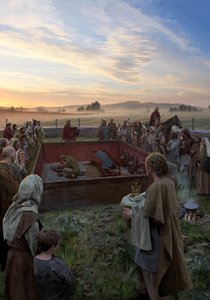Unlingen - Rich Graves at the Foot of the Bussen Mountain
In 2016 a new road was built near Unlingen at the foot of the Bussen mountain. Three round flat elevations existed within the route, to the west of the village in the "Tiefes Ried" area, on the edge of the Danube lowland. In 1890 Pastor Selig discovered a Celtic grave in an area nearby known as the "Hexenbuckel". A rescue excavation of the aforementioned three elevations revealed them to be three Early Celtic burial mounds with a total of five burials dating from the 8th to 5th century BC. The tumuli, which had already been much flattened by agricultural use, had diameters of between 16m and 31m. In the center of each mound traces of a Celtic burial ground were found. In the center of each, the remains of large burial chambers, originally built of wooden beams, could be detected. In two mounds these had already been robbed out in antiquity. Nevertheless, in five graves somewhat unusual and above-average quantities of rich grave goods were found.
A robbed vehicle grave dating to around 700 BC. Is particularly noteworthy as it contained an unusual statuette. It depicts a human figure seated on a horse with two opposing heads. The best parallels for this sort of figure are found in central and northern Italy, and date to the second half of the 8th and the first half of the 7th century BC. Bronze ornamental plates, bronze fittings for a yoke and iron wheel components were preserved for the four-wheeled vehicle, This grave shows that local elites were already living in the environs of the Bussen before the Heuneburg was re-inhabited 11km away. Even after the Heuneburg had been re-occupied, burials continued to be made in Unlingen, some of which were outstanding, as shown by the discovery of a grave with four golden earrings.
References: Hansen/Meyer/Tarpini 2018; Hansen u. a. 2018b; Hansen u. a. 2019a.





